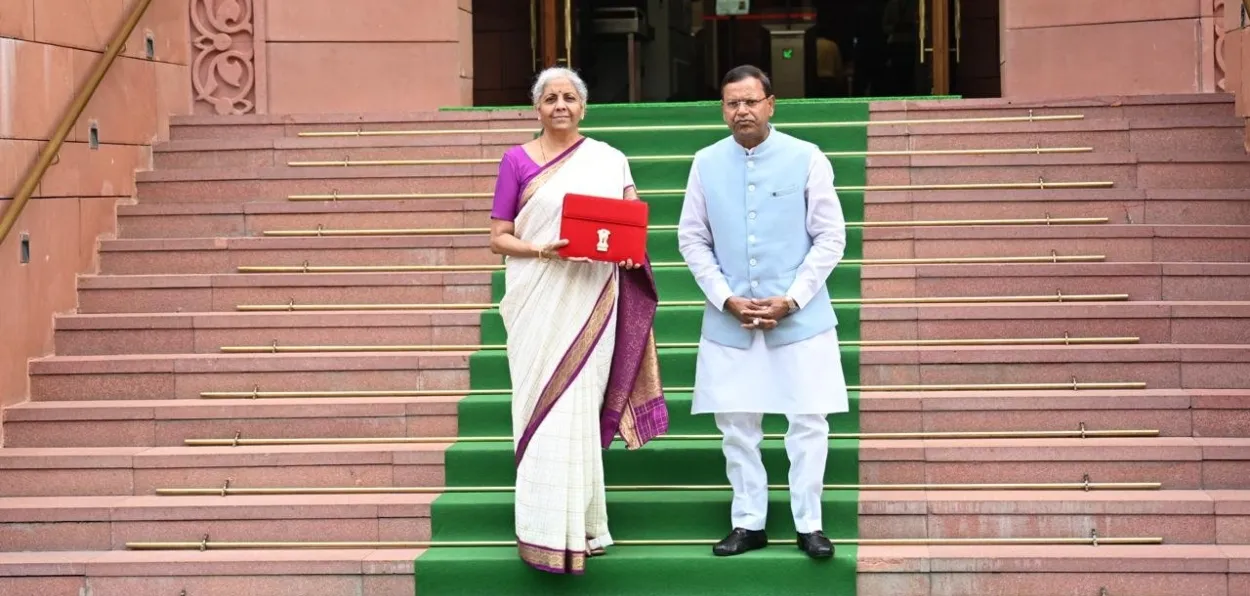
 Sushma Ramachandran
Sushma Ramachandran
Budgets are expected to reflect both political and economic realities. The first budget of the Modi 3.0 government has certainly done so; It has maintained fiscal prudence while seeking to meet widespread concerns over unemployment as reflected in the elections. The deficit has been brought down from the 5.1 percent specified in the interim budget to 4.9 percent without imposing any fresh taxes.
Behind The News
The long pending demand of the salaried middle class for a rise in the standard Income tax deductions has been met along with a dip in customs duties for electronic goods like mobile phones. At the same time, the compulsions of coalition politics have prompted greater attention to the eastern region which is probably for the best, given the slower economic pace in this area.
Finance Minister Nirmala Sitharaman's seventh budget speech dominated agriculture, employment, and skilling. The push to invest in infrastructure continues and yet the increase in capital expenditure is not as high as in the past few years. Even so, the 11.1 per cent rise in capex as laid down in the interim budget has been retained though the private sector is now expected to play a bigger role. Stock markets may be unhappy with some levies but the abolition of angel tax and corporate tax cuts on foreign companies are set to give an impetus to investments.
The much-awaited next-generation reforms have been set aside till a new economic policy framework is brought out. Some steps are proposed in the critical area of land reforms like digitisation of rural and urban land records while some have been left. Medium and small industries must also wait till more detailed proposals are formulated to get rid of the licensing and compliance rules that have been a huge burden for the sector.
In agriculture, the focus is rightly on research in the areas of both productivity and climate change as experts agree it is time to pivot this sector in a new direction. From the Green Revolution that brought prosperity and plenty in foodgrains, the agricultural economy now has to move towards other crops and improved efficiency. Vegetables, oilseeds, and pulses are thus given priority in the budget along with marine products like shrimps which dominate the export basket.
What stands out in the budget proposals, however, is the detailed plan outlined for employment and skilling, clearly in response to the clamour over jobs that was a dominant theme of the elections. The proposals envisage employment subsidies in the formal sector for which as much as Rs. 1.48 lakh crore has been allocated in the current fiscal. From providing the first month’s salary to supporting provident fund deductions, the set of schemes is expected to benefit 29 million youth in new jobs.
Skilling has also been highlighted and a new centrally sponsored scheme will upgrade Industrial Training Institutes in line with the industry’s needs. It is expected to benefit two million young people. The only snag is that so far such skilling education has not been effective enough to meet the needs of many sectors. There is thus the incongruent situation of jobs being available but not enough trained personnel to fill them.
The need to push up female labour force participation is mentioned in the form of public-private partnerships in setting up women’s hostels and crèches. Other schemes are also specified for promoting greater market access for women-led cooperative enterprises. But there needs to be much greater emphasis on providing support to women to enter the labour force in a deeply patriarchal society.
One element in the budget that has raised controversy is the new Purvodaya scheme for the eastern region which will probably provide a long-awaited thrust to infrastructure in the slowest-growing region of the country. The opposition has already raised the issue of funding for projects in states like Bihar and Andhra Pradesh. It cannot be denied, however, that states in the eastern region need special attention given their relatively slower development. Bihar, for instance, has the lowest per capita income in the country, according to data from the National Council of Applied Economic Research.
Andhra Pradesh does not fall into the category of laggard States in terms of development. Even so, it needs a massive infusion of funds both for the new capital as well as the critical Polavaram irrigation project. The budget proposals make it clear, however, that there will be a mix of funding from the center and multilateral financing institutions.
In the area of taxation, the increase in the standard reduction as well as the alteration of personal income tax rates is bound to please the salaried middle classes. The catch is that taxpayers will have to opt for the new tax regime without any exemptions to avail of the new rates.
Foreign companies have also been given a cut in corporate tax from 40 to 35 percent which could conceivably reverse the declining trend in foreign direct investment. The removal of the angel tax will similarly be greeted by hosannas from the start-up community as it was aimed at fledgling companies in this segment. As for the increase in long-term capital gains tax, there has been a sharp reaction from tax experts who feel the move to do away with indexation will affect property sales by the middle class.
ALSO READ: How a Haryana couple discovered the spiritual grandeur of APJ Abdul Kalam's personality
The first budget of the present government is thus a pragmatic document that has highlighted schemes for job creation and skilling while maintaining fiscal responsibility. The only lacuna is that the long-awaited next-generation reforms will have to wait till the new economic policy framework is unveiled.
